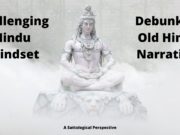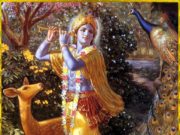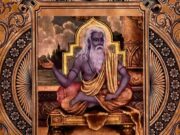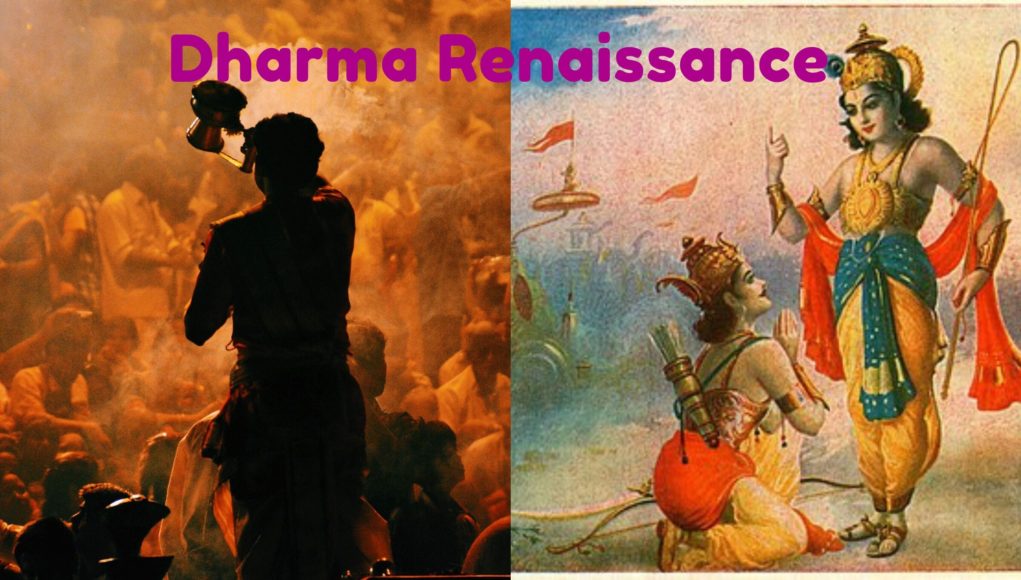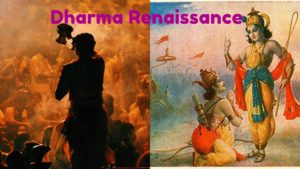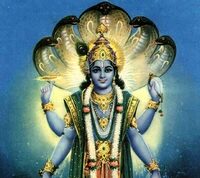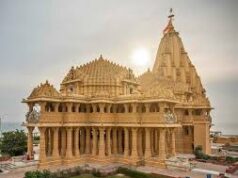In Bhagavad Gita , Krishna says that whenever there is a decline in dharmic values, He descends to uphold dharmic values. What is dharmic? Dharmic can be very simply understood to be anything guided by the teachings of Vedas and also practical situation. Dharma is very difficult to understand even by experts. Therefore Dharmic conclusions are situation specific and are usually derived through discussions of experts in different aspects of a situation. Therefore the principle of Dharmic evaluation can be applied for anything or anyone. Many faiths in the world, especially Eastern faiths are bound together by dharma. In fact, they discuss dharma explicitly in different contexts.
Hinduism, Buddhism, Sikhism, Jainism, Atheism, Logicism and many other faiths in the unorganised religion world are bound together through the common bond of Dharma.
If we add everyone then Dharma has the largest population amongst any practiced faith. Most people are guided by logic, reasoning and a practice of spirituality. That is Dharma. If I put this into numbers then the population of Dharma Followers is almost 5 billion people on the planet.
The world is divided into Communal faiths (Christianity, Islam and Judaism) and Dharmic faiths (as explained before).
Communal faiths focus on their followers and are very very well organised in terms of community. Either you are one of them or not. That guides their existence. Most Communal faiths rely on active recruitment because their success is measured in terms of followers. They also need political power for coercive purposes. Its difficult to question anything in communal faiths because one needs to show absolute loyalty to the community. Often free ideas which are deemed a threat to the existence of communal faith are considered disrespectful and looked upon as disdainful. Free questioning is usually considered heretic. Usually the definition of sin and hell is propounded to demand absolute surrender. Laws of apostasy are freely applied so that no one leaves their community.
Fear is the only way to keep community together if the logic & reasoning is ignored.
Whereas Dharmic faiths are passive and are very individual driven. Dharmic faiths focus on individual spiritual progress and a democratic process to put an Organization for that organic growth. Some people call it Sanatana Dharma or Eternal Duties or Responsibility. Dharmic faiths are organised loosely and heavy emphasis is given to questions and answers. Importance is given to discussions, logic and reasoning. Therefore, the individual is very strongly empowered, however, this empowerment also brings free thinking. Usually people in dharmic faiths stay independent while contributing to society. Greatest thinkers have come through dharmic principles. Since the Organization is loose, the followers tend to mix with everyone. Often time the dharmic individuals are the target of communals for their canvassing. In fact most of the followers of Communal faiths have come from Dharmic faiths. However, highly educated individuals or free thinkers in communal faiths gradually become frustrated and leave them. Then tend to go back the dharmic group. This process continues.
As information flow has become more open, more and more individuals want to come out of any denomination and move to the dharmic side because they appreciate the open unorganised approach to the way of life. Free flow of information is the biggest threat to Communal faiths. They almost decry it.
Dharma Renaissance has just begun because dharma being duty based has found the calling with intelligentsia.
With liberal movements gaining ground, dharma is becoming the obvious platform for the masses. Its like open source software in technology. Initially all software was open-source and then brands took over and now again with the advent of cloud open-source is the norm. Similarly, everything was Dharmic Faiths before, Communal Faiths took over in the middle and with the power of Technology, Dharmic faiths are reviving. Another great quality of Dharmic Faiths is that there is absolute freedom to disagree. In fact debate is the common way to establish dharmic values. This freedom can be mind boggling to the communals in the first place. But when communals get used to it they almost relish it. They will never give up. Just like when a company gets used to open source they can never give up.
“Dharma renaissance is a natural phenomena that is unfolding right in front of our eyes.”
Decades of corruption that kept communals flourishing has been exposed. With information freely available Dharma will reassert itself in the minds of the masses. Let’s hope the movement is faster.


